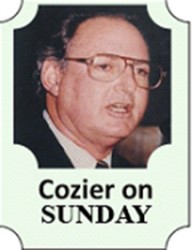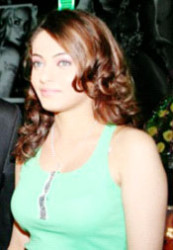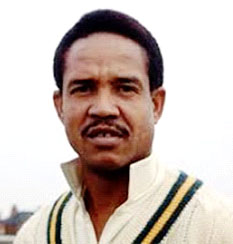 Chris Gayle warmed up, so to speak, for the West Indies’ opening match in the World T20 at a Mumbai disco in the company of Bollywood starlet Sneha Ullal. He was there for the launch of the latest single of close pal, teammate and emerging rap artist Dwayne Bravo.
Chris Gayle warmed up, so to speak, for the West Indies’ opening match in the World T20 at a Mumbai disco in the company of Bollywood starlet Sneha Ullal. He was there for the launch of the latest single of close pal, teammate and emerging rap artist Dwayne Bravo.
Photos appeared on Instagram and in Indian papers. Ullal described Gayle as ‘such a cool person’ after they ‘danced and chatted’.
A couple of days later the muscular left-hander had switched venues from the disco to the middle of the nearby Wankhede Stadium where he belted his T20 International record 11 sixes in an even, unbeaten 100 off 48 balls, steering the West Indies to the winning target of 183 for four with 11 balls to spare over England. “Aggressive as usual,” Ullal tweeted.
Gayle’s similar exploits over several seasons in the IPL rendered it virtually routine for the thousands packed into the stands. His unbeaten 175 off 66 balls for the Bangalore Royal Challengers against Pune in April, 2013, remains the highest score in the game’s shortest format, the 17 strikes into the crowd the most sixes.
It is not recorded whether he prepared for that performance with a night out; it would be surprising if he didn’t. His trait of mixing the Caribbean partiality for a good time off the field with performance on it is common to several of his contemporaries and, as was evident in the Under-19s in their World Cup triumph in Bangladesh in January, their successors as well.
It was reflected in the exuberant ‘Gangnum Style’ dance Gayle choreographed as he and his team mates celebrated victory in the 2012 World T20 in Colombo and, more recently, in the teenagers’ joyful ‘Chest Roll’ frolic after the U19s upset win in the final over India.

Cricket’s shortest format arrived three decades after the end of the celebrated career of another West Indian, Sir Garry Sobers, the most accomplished player the game has known. It is not difficult to imagine what his all-round versatility would have been worth in today’s various T20 leagues that have made millionaires of Gayle and so many others.
Like Gayle and his colleagues, he also found relaxation away from the pressures of his fame in his night life. By the time T20 came along and rapidly multiplied with internationals and domestic franchises, Gayle was firmly established in the two longer formats. He already had seven Test hundreds (one the first of his two triples, another a double) and eight in ODIs. He soon found that the shortest format was even more suited to his stand-and-deliver method.
In his fourth match, he launched the inaugural World T20 in Johannesburg with 10 sixes in a 57-ball 117 against South Africa.

After his England pyrotechnics, his 46 T20 Internationals were peppered with 98 sixes and 127 fours; his strike rate was 145.64 per 100 balls. His 17 against England raised his number of maximums to 637 in 240 T20 matches overall.
He indulges in none of the scoops, ramps and reverse sweeps the version has created. He basically opens his stance and thumps the ball with his immense body strength, mostly down the ground or over mid-wicket.; he enters today’s match against Sri Lanka in Bangaluru with 98 sixes in 46 internationals.
As popular as his power-hitting has made him, particularly in the IPL in India, his frivolous, ill-timed comments on tv broadcasts and the braggadocio following the best of his performances lose him credit.
“The world is watching, so the universe boss got to deliver and he did. The Gayle force got the better of England today,” he said after his hundred in the World T20 opener.
‘Superstar’, ‘The Dominator’ and ‘Mr.Cool’ are other titles he assigns to himself.
His on-air “don’t blush, baby” comment after inviting female interviewer Mel McLaughlin out for a drink following an Australian Big Bash match in Hobart in January generated a firestorm of criticism.
It is a charge never applicable to Sobers whose only similarities with Gayle is his left-handedness and his relish for the night life. In his time, there were none of the omnipresent camera-phones to record his every move, no internet to spread his Facebook and Instagram images. Certainly, Sobers and earlier West Indies teams kept their revelry to the dressing room; they took success as a matter of course.

Yet Sobers admits that he was “a night owl,” as he put it in a recent interview, explaining that if he was early to bed, he would toss and turn “thinking of Trueman or Statham or those types of bowlers running in.”
He realised that if he was out late “people would talk” if he failed. He said was even initially reluctant to accept the captaincy Frank Worrell passed on to him because others who aspired to the post knew of his reputation.
“How could I then put them under curfew?”
The answer to the conundrum was obvious; he had to go out next morning and “produce.”
“The later I went out, the better I produced,” he said. “I was able to do that without any problems.”
He, of course, was Sobers; he could do any and everything on a cricket field “without any problems.”
I have personal experiences on tour of his matter-of-fact assertion. One example would suffice.
Two nights before the Adelaide Test of the 1968-69 series, he joined Dr. Rudi Webster, a fellow Barbadian who had bowled fast for Warwickshire in the county championship and was then practicing in Australia, and myself for a night out. We were about to call it quits when Sobers talked us into heading to the Arkaba, a hotel owned by Murray Sargent, a former South Australia player Sobers knew from his time with the state team a few years earlier.
It must have been two a.m. when he finally accepted our concerns that the Test was imminent and agreed to head back to the hotel, proclaiming that he felt “good and relaxed” and promising a hundred. He duly delivered, compiling 110 on the first day “without any problems.”
Not everyone can do it but, even at 36 in the twilight of his playing days, Gayle is making a pretty decent fist of it.









